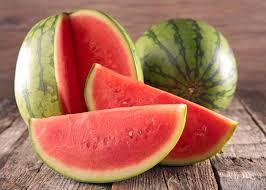Meal planning and cooking are essential components of a healthy lifestyle. Planning and preparing meals in advance can help individuals make healthier food choices, save time and money, and reduce stress. Eating a healthy, balanced diet is essential for maintaining good health and preventing chronic diseases. However, with our busy lifestyles and hectic schedules, it can be challenging to plan and prepare healthy meals. That’s where healthy meal planning and cooking come in. In this article, we will discuss the benefits of healthy meal planning and provide tips for meal planning and cooking to help you stay on track with your health goals.
The Benefits of Healthy Meal Planning
Meal planning involves deciding in advance what you will eat for each meal, making a grocery list, and purchasing the necessary ingredients. Here are some benefits of healthy meal planning:
1. Saves Time and Money
Meal planning can help you save time and money by reducing the need for frequent grocery store trips, takeout orders, and restaurant meals. When you plan your meals, you can buy ingredients in bulk, which is usually less expensive than buying individual items. You can also plan your meals around sales and discounts to save even more money.
2. Helps with Weight Management
Healthy meal planning can help with weight management by controlling portion sizes and ensuring that you are eating a variety of nutrient-dense foods. When you plan your meals, you can make sure that you are consuming the right amount of calories, protein, healthy fats, and carbohydrates.
3. Reduces Food Waste
Meal planning can also help reduce food waste by allowing you to use up ingredients before they expire. When you plan your meals, you can use leftovers in creative ways, which can reduce waste and save money.
Tips for Healthy Meal Planning and Cooking
Here are some tips to help you plan and cook healthy meals:
1. Start with a Plan
Before you go grocery shopping, decide what you want to eat for the week. Make a list of breakfast, lunch, and dinner options and plan for healthy snacks. Choose recipes that are easy to prepare and use similar ingredients to save time and reduce waste.
2. Buy Fresh, Whole Foods
When grocery shopping, focus on buying fresh, whole foods such as fruits, vegetables, whole grains, lean proteins, and healthy fats. Avoid buying processed foods, which are often high in added sugars, sodium, and unhealthy fats.
3. Prep in Advance
Prepping ingredients in advance can save time during the week. For example, you can chop vegetables, cook rice or quinoa, and marinate meat or tofu in advance.
4. Use Healthy Cooking Techniques
When cooking, use healthy cooking techniques such as grilling, baking, roasting, or steaming, instead of frying or sautéing in unhealthy oils. Use herbs, spices, and low-sodium seasonings instead of salt to add flavor. Cook larger portions of meals and freeze the leftovers for later. This will save time and ensure that you always have a healthy meal on hand.
5. Experiment with New Recipes
Don’t be afraid to try new recipes and experiment with different ingredients. This will keep your meal plan interesting and help you discover new healthy foods that you enjoy. Trying new recipes can help you stay motivated and interested in healthy eating. Look for healthy recipe blogs or cookbooks, and experiment with new ingredients and flavors.
In conclusion, healthy meal planning and cooking are essential for maintaining good health and preventing chronic diseases. By planning your meals in advance, buying fresh, whole foods, prepping in advance, using healthy cooking techniques, and experimenting with new recipes, you can stay on track with your health goals and enjoy delicious, nutritious meals.































